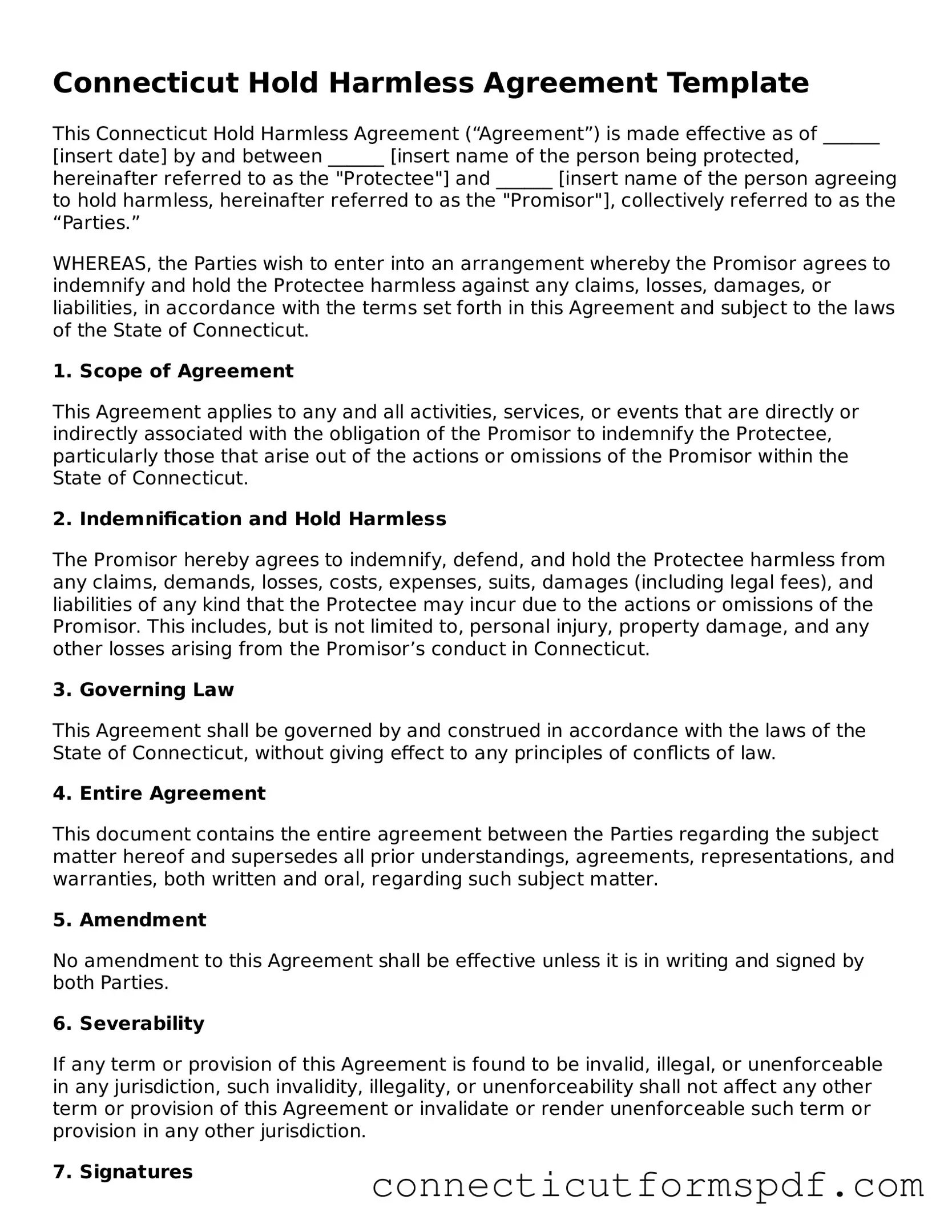Connecticut Hold Harmless Agreement Template
This Connecticut Hold Harmless Agreement (“Agreement”) is made effective as of ______ [insert date] by and between ______ [insert name of the person being protected, hereinafter referred to as the "Protectee"] and ______ [insert name of the person agreeing to hold harmless, hereinafter referred to as the "Promisor"], collectively referred to as the “Parties.”
WHEREAS, the Parties wish to enter into an arrangement whereby the Promisor agrees to indemnify and hold the Protectee harmless against any claims, losses, damages, or liabilities, in accordance with the terms set forth in this Agreement and subject to the laws of the State of Connecticut.
1. Scope of Agreement
This Agreement applies to any and all activities, services, or events that are directly or indirectly associated with the obligation of the Promisor to indemnify the Protectee, particularly those that arise out of the actions or omissions of the Promisor within the State of Connecticut.
2. Indemnification and Hold Harmless
The Promisor hereby agrees to indemnify, defend, and hold the Protectee harmless from any claims, demands, losses, costs, expenses, suits, damages (including legal fees), and liabilities of any kind that the Protectee may incur due to the actions or omissions of the Promisor. This includes, but is not limited to, personal injury, property damage, and any other losses arising from the Promisor’s conduct in Connecticut.
3. Governing Law
This Agreement shall be governed by and construed in accordance with the laws of the State of Connecticut, without giving effect to any principles of conflicts of law.
4. Entire Agreement
This document contains the entire agreement between the Parties regarding the subject matter hereof and supersedes all prior understandings, agreements, representations, and warranties, both written and oral, regarding such subject matter.
5. Amendment
No amendment to this Agreement shall be effective unless it is in writing and signed by both Parties.
6. Severability
If any term or provision of this Agreement is found to be invalid, illegal, or unenforceable in any jurisdiction, such invalidity, illegality, or unenforceability shall not affect any other term or provision of this Agreement or invalidate or render unenforceable such term or provision in any other jurisdiction.
7. Signatures
Both Parties agree to the terms and conditions set forth in this Agreement and have duly affixed their signatures below:
Protectee: ______ [insert Protectee’s name]
Date: ______ [insert date]
Promisor: ______ [insert Promisor’s name]
Date: ______ [insert date]
